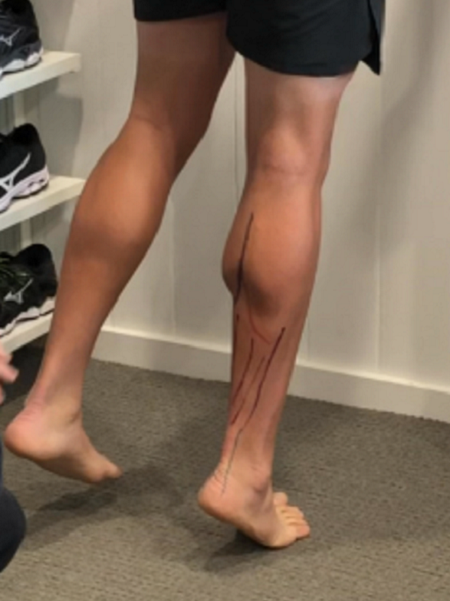The five things to get you running: Get the right equipment, find the right speed, use basic technique, start with easy intervals, be kind to yourself.
Moving from walking to running involves a sudden jump in the load through your body. This has amazing benefits for health, fitness, weight loss and long term injury prevention. However, this sudden jump in force through your body creates some problems with a greater risk of injury, exhaustion and running just becomes way too hard.
Here are our simple tips to protect your body, make running achievable and become sustainable in the long term:
1. The Right Equipment
Good quality shoes that are matched to your foot type are critical when you move from walking to running. Correct footwear helps protect your feet, shins, knees, hips from injury.
High quality training gear made from moisture wicking materials keeps you comfortable, dry and reduces chaffing. Compression is fantastic for comfort and to stop the jiggle. Women also need a high quality sports bra for support, comfort and to avoid rubbing.
If you look the part, you will feel the part and the added bonus is that nothing gets you more motivated than some new running gear!
Click here to view our range and shop online at our Brisbane store
2. What Speed Do I Run At?
Some people start running too slow. Running for a long time at a very slow pace will result in a poor and inefficient technique that will make you prone to injury.
Running at a sprint will get the heart rate up too fast and will load the body quickly.
Run at a pace that feels smooth and comfortable on your body. Too slow and you will feel like you are plodding or walking. Too fast and you will feel like running is way too much effort. Run at your pace that feels smooth, even if you can only manage this for 20 or 30 metres.
3. Simple Technique Tips:
Before you start running, stand up as tall as you can. This will extend your hips, knees and tighten your body. It will also engage your core muscles for stability. When you start to run, you should 'think tall'.
Click here for a link of how we demonstrate being tall
Now that you are standing up tall, the second thing is to now lean forward. Staying tall and leaning forward will allow you to push and drive forwards.
Click here for a link of how we demonstrate forward lean
As you are about to start running and while you are running, simply think 'Tall and Forward".
4. Intervals Make It Easier!
Running constantly, especially when our fitness hasn't developed yet, is really hard. Intervals make running much easier. Interval training involves running for a period until your heart rate and breathing rate increases and then you stop for a minute or two to allow your body to recover. This is process is repeated a number of times in a row.
Interval training allows runners to run at a quicker pace that will be a lot smoother, more efficient and will have less impact on the body. It is also very beneficial in building strength and speed quickly as well as cardiovascular fitness. Elite runners use a lot of interval training with their training programs.
The distance you run for the interval really varies from person to person. Some people will use markers such as the power poles. Some runners will use a set period of time such as 30 seconds, 1 min or 2 min.
The amount of rest time between intervals is usually 1 or 2 minutes. It should be enough time for your heart rate and breathing rate to settle. You need to make sure that you get your breath back so that you can tackle the next interval properly. You can rest by standing still or walking slowly.
Most people will perform 5 or 6 intervals (run followed by rest that is repeated 5 or 6 times). With improved fitness, the intervals will gradually start to get longer and the speed might increase a little. Eventually, it will be achievable to run comfortably for a continuous amount of time, although this is not as critical as you might think.
5. Be Kind To Yourself & Make It Sustainable
The best mentality for managing your running is following the 'two steps forward and one step back' mantra. This applies to daily running where you should never run for more than two days in a row. Make sure you have a recovery day where you take a break or go do a different type of exercise. At a week to week level, you will also need to apply the 'two steps forward and one step back' approach. You can build your running each week, however you will need a recovery week every third or fourth week where you back of the pace, reduce the intensity and shorten the distance so that running is very comfortable for the week.
These recovery days and recovery weeks are critical for muscle repair and to give your body a chance to capitalise and cash in on the hard work that you have put in. If you run every day and try to increase constantly, you will become fatigued, you won't improve as quickly, you will drastically increase the chance of injury as well as set yourself up for failure.
The final piece of advice for runners of all levels is to listen to your body and be kind to it. If you feel flat for a run or for a week, don't be hard on yourself. Don't ignore the bad pains, which are the ones that are more than general soreness of your big muscles, and get them attended to by one of our sports podiatrists. Getting help early will make running more fun and rewarding as well as sustainable in the long term.
Click here if you need to Book Online with our Brisbane Podiatrists or email admin@shoesfeetgear.com.au with any questions.
Good luck!





